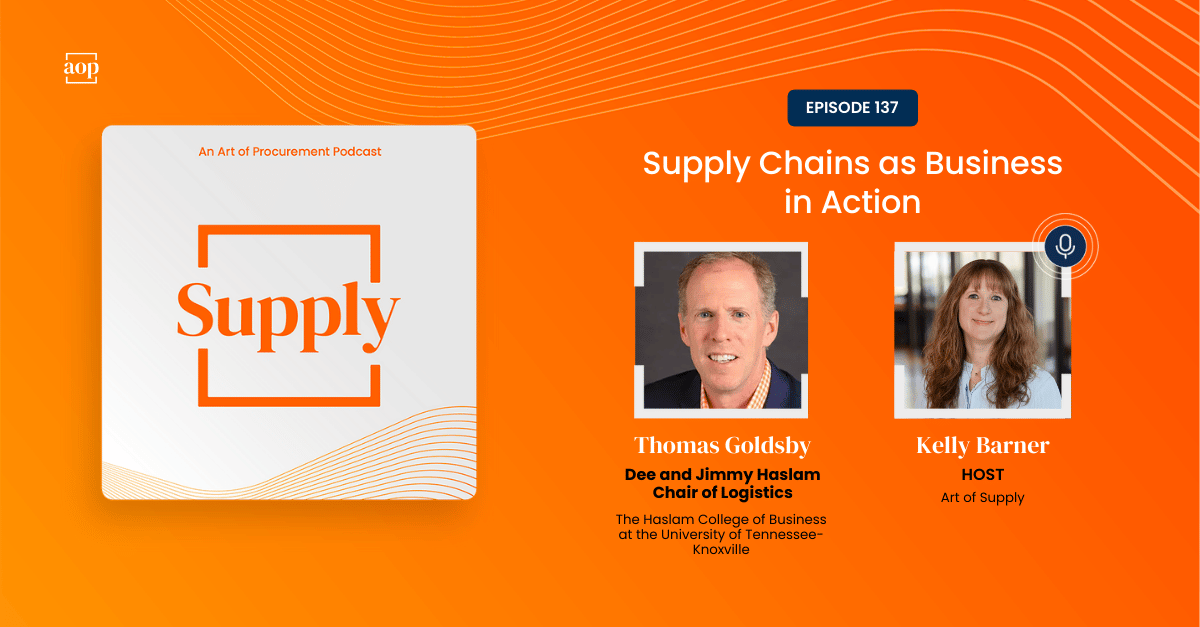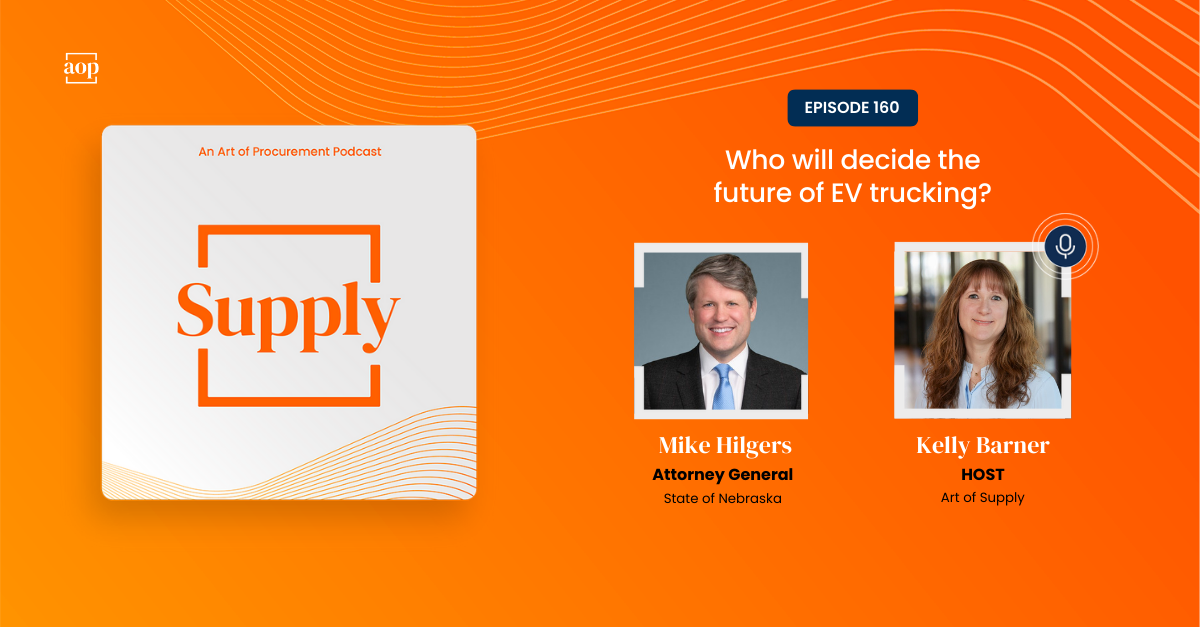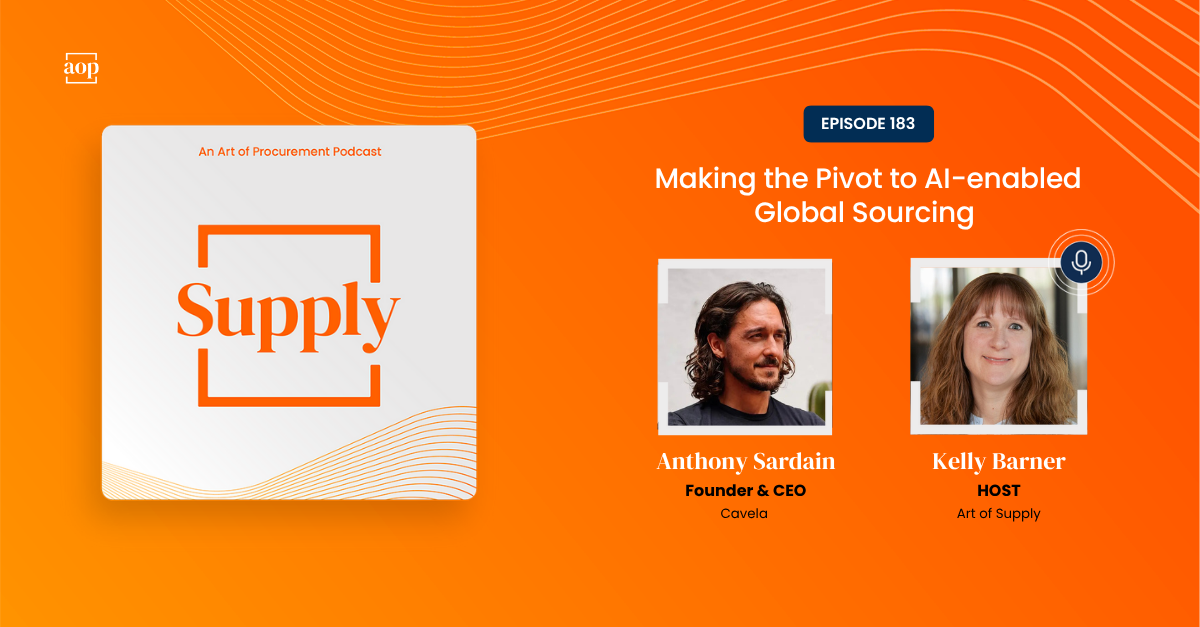
We know supply chains are complex, but to truly understand how complex they are, and how they reached this point, we need to look back through decades’ worth of business decisions. There are layers upon layers of choices that have been made for reasons ranging from strategic analysis to raw emotion.
Take the buzz around X-shoring as an example. When supply chains were snarled in 2020 and 2021, the default reaction was that global supply chains were no longer feasible, lean thinking was dead, and the time had come to bring everything home. The desire to reshore branched into nearshoring and friendshoring, and yet few of these discussions materialized operationally.
To learn more about the X-shoring trend and the business decisions and philosophy that surround it, I recently sat down to speak with Thomas Goldsby, the Dee and Jimmy Haslam Chair of Logistics at the Haslam College of Business at the University of Tennessee-Knoxville, right after he finished leading a class in supply chain management for 700 undergraduate students.
Although Thomas was an economics and finance undergrad himself, early in his career he landed a position in logistics at the Valvoline Oil Company in Lexington, Kentucky. Not only did he discover a love of logistics and transportation, but he also realized he could apply his background economics and finance background to what he calls the “action of business.”
Twenty seven years later, he is no less enthusiastic about the field. “Supply chain management is a many splendored thing,” as he told me.
X-Shoring 101
Supply chains do stretch across the world, and increasingly find themselves tangled up in geopolitics. For proof, we don’t have to look any further than COVID, when most retailers went from an approximate 95 percent in-stock rate to empty shelves in a matter of hours. In that moment, when the on-hand inventory was exhausted, consumers learned to appreciate the supply chain performance they had enjoyed until that point.
Leading minds instantly started looking for a fix, and they found one with a catchy name: X-shoring. Everything comes from somewhere, but most of it doesn’t come from here (regardless of where ‘here’ is). That means it takes time and many hands to get goods and materials from the source to the consumer. The relative costs and benefits of each source depend on what is being moved or produced.
During our conversation, Thomas spoke about three of the most common examples of X-shoring in use today:
Reshoring: Moving the production or sourcing of materials and components from a foreign country to a domestic location.
“That takes a lot of money, a lot of courage, a lot of gumption, if you will, to reverse course,” Thomas pointed out. “Three to four decades in the making, we’re not going to readily reverse course in a matter of months or even years. Again, it takes a lot of gumption, a lot of finance to make that happen.”
Nearshoring: Moving the production or sourcing of materials and components from a far away country to a closer one.
“Maybe we can still enjoy some low-cost country sourcing from our dear old neighbor to the south, Mexico,” Thomas suggested as an example. Mexico “has become our primary trading partner as of this year, has surpassed China. 25 years ago, we had Maquiladora operations where Mexican low-cost country sourcing wasn’t cheap enough and it went overseas to Asia, namely China. Some of that is coming back to the region.”
Friend-shoring: Allowing the production or sourcing of materials and components to stay in a distant country, but selecting a reliable nation as the target location for those relationships.
“Maybe we can’t bring it back into our hemisphere. Maybe there’s natural resource limitations, or the materials simply are not found in the U.S. or nearby. Maybe there’s a friendly nation, say Australia, where we might be able to source these raw materials and perhaps even produce products, even though it’s still a long way from the U.S. shoreline. We have confidence that we’re going to remain very friendly with those nations, hence friendshoring, sometimes referred to as ally shoring.”
The Journey of a Granola Bar Begins with Chocolate Chips
Thomas uses the deceptively simple example of a granola bar to illustrate for his students just how complex and far flung supply chains can be.
“Think about a pretty simple granola bar, a simple grocery product that has just a handful of ingredients, right? You’ve probably got some grains and some sugars and some spices and maybe a chocolate chip or two,” he explained. “And don’t forget the packaging, whether it’s the foil packaging as well as the outer packaging.”
Then he asks his students where everything comes from. They start with, for example, a General Mills factory in Minnesota where the granola bar is made and they start to map the sources of the ingredients.
“We realized we’ve got to go pretty far and wide, well beyond the borders of the United States to get those chocolate chips, maybe to get some of those spices, maybe to get the petroleum that then goes into the plastic packaging. Pretty soon students start to realize, ‘Wow, this is a simple product and yet the supply chain is so complex.’ And it’s not just students in supply chain management and supply chain pros out there that are coming to grips with those complexities.
“The realities of our global supply chains, everyday people, regulators, public officials, everyone has come to grips with this notion of the end-to-end supply chain and its inherent complexities.”
In fact, Thomas suggests everyone – Art of Supply listeners and readers included – try a supply chain mapping exercise of their own. Start by going as far upstream as possible, all the way to raw materials if possible, and finish but going all the way downstream, through intermediaries, distributors, and retailers to reach the end consumer.
“What I’m really pleased to tell you is that every time my students that have an opportunity to present their supply chain map back to the focal company that they are mapping a simple product from, those business professionals with that company have learned something about their supply chain that they did not know before my students were there projecting it on the big screen and maybe shining a light, perhaps into some dark corners that they just hadn’t ventured into,” Thomas shared.
“Did you realize that you’ve got a redundancy here or you’ve got a point of vulnerability there that maybe is a cause of concern? The reason you’re getting a shortage is because there’s a much bigger company, another industry that’s buying from that company and they’re usurping all that supply. That’s why you’re left with allocation and high prices and spotty availability.”
For Thomas, the assignment is rewarding because he gets to see his students start to understand the interconnected nature of global production and logistics. Most of us, however, are more likely to be the procurement or supply chain professionals at those companies, surprised by what a bunch of college students were able to tell us about our sources of supply. That is why everyone should try the assignment.
For more on the domestic v. global production of EVs, the relative leverage of labor groups in an increasingly automated world, and the many factors that go into determining what parts of the world a supply chain will run through, listen to the full interview!


.png)

